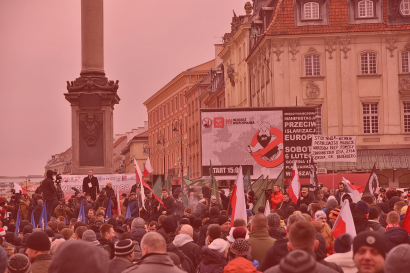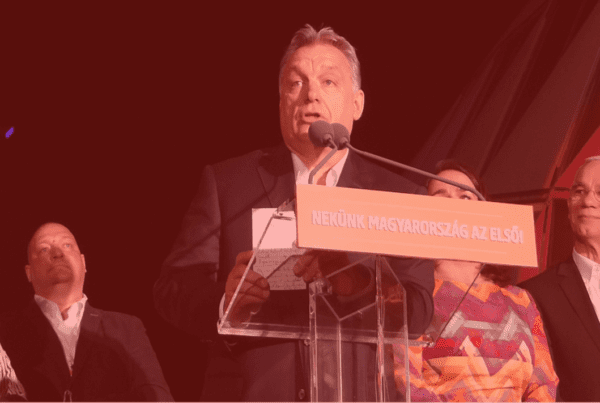Photo: “Manifestacja przeciw islamizaji Europy Ruch Narodowy Młodzież Wszechpolska plac Zamkowy 2016“, by Adrian Grycuk licensed under CC BY-SA 3.0 PL. Hue modified from the original
Kotwas, Marta, and Jan Kubik. “Symbolic thickening of public culture and the rise of right-wing populism in Poland.” East European Politics and Societies 33, no. 2 (2019): 435-471.
Abstract
A key feature of thin populist ideology is a sharp division of the social world into “good people” and “bad elites.” Populist ideology “thickens” when it is combined with another ideology, for instance, when this basic distinction is formulated in terms of a nativist or religious discourse with the aim of defining “aliens” or “enemies.” Ideological thickening of populism is boosted by and contributes to the cultural process we call symbolic thickening. Thin symbolic systems, congruent with some forms of populism, have relatively few symbols with rather simple connotations, are amenable to many interpretations, and are thus potentially attractive to a large group of people. They can be “thickened” by adding new symbols and suggesting tight interrelations between them. The resulting “thick” symbolic system offers a narrower definition of collective identity and thus attracts a narrower group of people. Our central argument is that a powerful cultural-political feedback loop has emerged in Poland. A gradual symbolic thickening of the Polish public culture through the intensification of Catholic and nationalist discourses resulted in the expansion of the discursive opportunity structure. This produced conditions conducive to the thickening of populist ideologies and helped to increase the legitimacy of populist movements and parties. The rising legitimacy and popularity of the increasingly vigorous “thick” populism, in turn, contributed to the further symbolic thickening of public culture. The argument is based on detailed descriptions and interpretations of four performances and visual displays.







